Honeywell L5210 & L7000: Compare & Contrast
Related Products
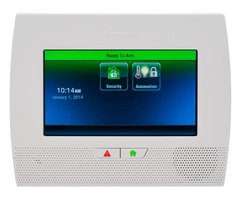
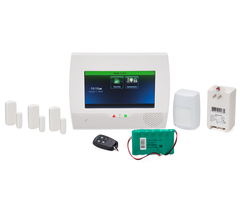

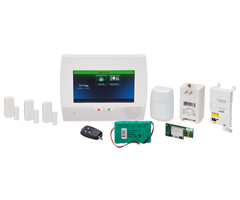
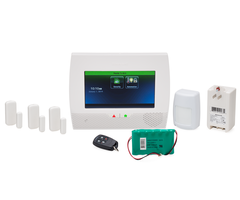
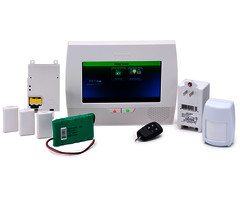
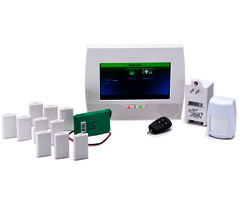

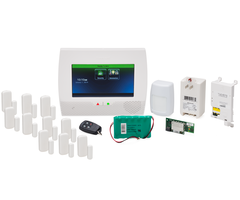
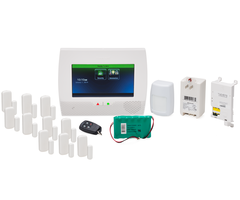

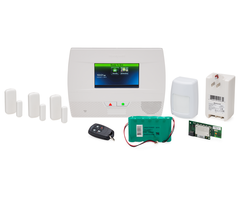
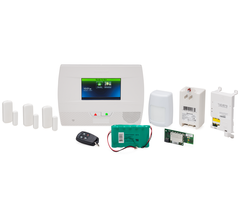

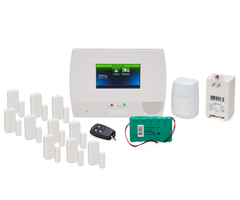
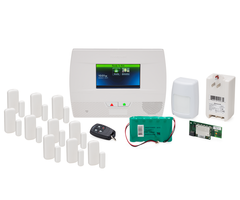
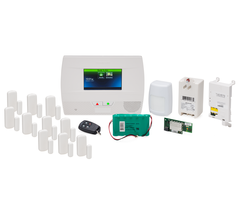
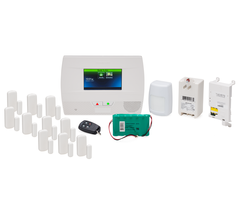

Related Categories
Description
The Honeywell L5210 control panel is the latest panel in the L5200 series. The L7000 is the latest in the Lynx line of wireless control panels. This video will aim to explain the differences as well as the similarities between the two panels.
While most of the wireless features will be redundant in the two models, the Honeywell L5210 & L7000 do have distinct differences. Follow along with the video to learn about these and their features to help you better decide which one is right for you.
The L7000 has a 7-inch touch screen and enhanced features. The screen will show video that can be streamed directly to the panel in a quad camera view. Conversely, the L5210 can only view one camera at a time.
Both systems do support the Z-Wave card that will allow for automation control. They also both make use of the L5100 WiFi module. Both of these modules will result in a truly wireless home and security system.
For devices and communications, both panels fully support the AT&T 3GL cellular device as well as all of the 5800 series wireless sensors.
The first main hardware difference is that the L7000 does not support a tip & ring POTS phone line. You can use a hard wired phone line for communications.
When we get into the software, the L7000 is a little more robust. It features the ability to support up to 80 wireless zones. It will also support more Z-Wave enabled door locks and thermostats than the L5210 as the video will discuss in greater detail.
On the similarities though, both panels have graphic touch screens and both offer built in sirens. They both also support the LT power plug and offer swing down hinged panels for card and hardware access.
The L7000 will support more zones, more key fobs and more users. However, if you are using the panels in a residential environment, you should never reach the maximum for either panel. A business environment with multiple employees may benefit from the L7000 in this regard.
In the end, the ultimate choice is up to you as to which panel will work the best. If cost effectiveness is a priority, the L5210 is the inexpensive option. However the price difference may be negligible for the added features of the L7000 control panel.
Programming and support is identical for both panels and their user-friendly ease makes either one a great choice. This video aims to explain the differences and show how each panel comes out on top depending on your exact needs.
If you would like more information on either panel or the devices it supports, such as Z-Wave sensors, lights, door locks and thermostats, or if you want to learn how to enroll these devices into your system, please have a look at our other videos.
Transcript
Hi, DIYers. This is Frank at Alarm Grid here today, and we're in the Alarm Grid lab working with the LYNX Touch L7000 and L5210 wireless alarm systems.
We're going to start with comparing the two. The L5210 is the newer model for the L5200 series and, basically, has the same outside design. The screen is a little bit shrunken down, a couple minor features changed, but essentially, it's the same panel. The L5200 will be soon discontinued.
So the L7000 we'll start with. The L7000 is the larger enterprise panel, and it's a 7-inch graphic touchscreen. This is Honeywell's premiere panel. The larger screen offers nice viewing for video cameras. If you get Honeywell AlarmNet cameras, you can stream them directly to this keypad and view them in a quadrant style with four views, whereas the L5210, just like the L5200, only can view one camera at a time.
Beyond that, the systems are very similar. They both support the L5100 Z-Wave card, which is used for automation control. They both use the L5100 Wi-Fi module, which allows the system to speak to your internet using the Wi-Fi, 2.4 gigahertz Wi-Fi. They both support the 3GL, which is Honeywell's cellular communicator. That's going to allow you to use AT&T cellular network to communicate signals to a central station or use Total Connect. And they both support 5800 series wireless devices.
The L7000 does not support a phone line. So that's really the big difference here, as far as physical hardware differences between the L7000 and the L5210. The L5210, similar to the L5200 and its predecessors before that, will support a tip and ring POTS analog phone line. So if you wanted to set that as either a redundant path outside of your Wi-Fi and cellular or as a primary just for central station monitoring, you can do that on the L5210. You cannot do that on the L7000.
More on the L7000-- it also will support up to 80 wireless zones. So the L7000 is a little bit more robust. Outside of the hardware difference, with the L7000 having the limitation of no phone line, outside of that, the panels, physically, are very similar. They're both going to support Z-Wave, Wi-Fi, and cellular with the same modules.
On the Z-Wave side, the L5100 Z-Wave card will be supported by both panels, the L5210 and the L7000, and will insert on the same side of the board. It's opposite the Wi-Fi module. The L5210 panel will support up to 40 lights, similar to the L7000. However, with the thermostats and door locks, the L5210 will only support three thermostats and four door locks. And the L7000 will actually support up to four thermostats and six door locks.
So there's a little bit of some difference here on the Z-Wave side. Essentially, they're going to support the same devices. Just the L7000, generally speaking, with Z-Wave and the security side of things, which we can get into further in a moment, would just be a little bit more robust, just offer more automation control.
The big thing with the L7000 is the screen size. What I usually make a comparison to is the screen on the L5210 is even smaller than its predecessor, the L5200. So if you're someone that likes to see status from across the room-- maybe your eyesight isn't quite as good as it was before, and you want to have a screen that's a little bit bigger to see what you're doing in programming. Or you're just somebody that keeps it in your bedroom and wants to see that from your bed at night if something were to happen or a zone were to open. The 7000 is probably the panel for you.
It ends up breaking down to about a $35 to $50 difference when you look at it in our kits, on our website, at least. It'll obviously vary-- different retailers. But it's about a $50 value difference between the 5210 and the 7000. That may change over time, but that's just kind of a ballpark.
So the 7000 and the 5210 both have the built-in sirens. They're both graphic touchscreens. They both have the swing down panel that'll allow you to insert the communication modules and Z-Wave card. They both support the LT-CABLE, which is the 8-foot fixed plug that will allow you to toggle power easily to the system. They both can be hard wired, as well, and have trigger outputs for wired sirens through the use of one of our kits, such as a LYNX-EXT or the LYNX-WEXT, if you plan on wiring it from the trigger output.
The L7000 will also support up to 48 user codes and also 24 key fob zones. The L5210 will support less than that, and we'll get into some details on that in just a second. But if you have a lot of key fobs, maybe it's a business environment where you have several different users, you can use the 7000 to offer more key fob and zones if you have a larger system with more sensors.
Whereas the L5210 is going to support only 16 key fob zones. So that's basically up to four key fobs, four buttons each, if you're using your panic button on button four.
So as far as zones go, the L7000 will support more zones at 79, whereas the L5210 will support 63 zones. Now, in a residential environment and in most commercial environments, when you're dealing with a self-contained wireless system like this, usually 63 wireless zones is plenty. And in fact, the 5210 usually is a system that will meet your needs.
Now, the 7000 is a little bit bigger and better. For the price difference, most people do prefer the 7000, but again, if you're trying to keep things cost efficient, then the 5210 is a panel that works just fine. It's not going to limit you in any way, especially if you have a system that has less than 63 zones.
So with all that said, basically, the 7,000 is just a little bit bigger and better, a few more zones, a few more user codes, a couple more thermostats, and another couple door locks. But all in all, very similar systems. Both great. Do it yourself panels that are easy with programming, easy with the set up on the configuration of your wireless sensors, the Honeywell 5800 series sensors.
So at the end of the day, the choice will be yours. It may come down to price, but those are the differences between the L7000 and the L5210.
If you have any further questions on LYNX Touch panels, please email us at support@alarmgrid.com. And also, don't forget to subscribe to our YouTube channel.
- Uploaded
